Discover Singletracks Mountain Bike Podcast
Singletracks Mountain Bike Podcast

Singletracks Mountain Bike Podcast
Author: Singletracks.com
Subscribed: 1,302Played: 52,812Subscribe
Share
© Singletracks.com
Description
Podcast host Jeff Barber, Editor-in-Chief at Singletracks.com, aims to inform and inspire with topics and interviews from the mountain bike world. Since 2015, we have been sharing weekly stories from under the helmets of the most inspiring and influential mountain bikers.
Join us as we learn from top athletes, product designers, trail builders, coaches, mechanics, artists, and leaders in the mountain biking community.
Join us as we learn from top athletes, product designers, trail builders, coaches, mechanics, artists, and leaders in the mountain biking community.
435 Episodes
Reverse
Ryan Gaul is the Trek Factory Racing DH team manager and technical director. He’s been at Trek for about 10 years and is based in Madison, WI.
How close to stock do DH and enduro riders run their bikes?
Which aspects of a bike are modified to suit track conditions, and what stays the same for every race?
Do World Cup racers take many risks when it comes to equipment, or are they pretty conservative?
Is it common to run test parts, or prototypes in races?
Is it difficult to convince athletes to try new components on their bikes?
What type of race information is useful for product designers at the brand? How do you collect and communicate that information?
How many spare parts/bikes do you bring to a World Cup race for each athlete?
Are most athletes pretty involved in working on their own bikes?
What’s the most stressful part of a World Cup weekend for you?
Keep up with the Trek Factory Racing team at racing.trekbikes.com.
The Singletracks podcast is brought to you by TPC -- The Pro’s Closet. Spring is the perfect time to upgrade, and TPC has an industry-leading selection of new and Certified Pre-Owned bikes, plus frames, wheels and accessories. Each Certified, Pre-Owned bike is inspected, tested and serviced, and every bike includes thirty day returns. Visit tpc.bike/singletracks and enter code Singletracks40 to save forty dollars on every order over two hundred.
We're re-sharing one of our favorite episodes from 2022, so be sure to listen in case you missed it! Check back next week for more another fresh episode.
In 2006 Goat and two friends set out to ride mountain bikes from Alaska to Tierra del Fuego, the southernmost tip of South America, and after three and a half years of travel, the trio completed the mother of all bikepacking trips. Riding the Spine is just one of many adventures Goat has experienced over the years, including living in a tree house and building and working on countless bikes.
In this episode we ask:
How did you upbringing influence your adventure-based lifestyle?
How did you get into cycling, and particularly long-distance riding?
What was it like living in a treehouse for 4 years during college?
How did the idea of Riding the Spine come about? Who was in the group?
What was your bike setup at the start, and how did it evolve during the ride?
Why did you and the crew get arrested in Arizona?
Which sections were your favorites to ride?
Have you been on any bike adventures since the trip? Do you have any planned for the future?
Get more stories from Riding the Spine at ridingthespine.com and keep up Goat's latest adventures at wandergoat.com. Cover photo by Melinda Thompson.
The Singletracks podcast is brought to you by TPC -- The Pro’s Closet. Spring is the perfect time to upgrade, and TPC has an industry-leading selection of new and Certified Pre-Owned bikes, plus frames, wheels and accessories. Each Certified, Pre-Owned bike is inspected, tested and serviced, and every bike includes thirty day returns. Visit tpc.bike/singletracks and enter code Singletracks40 to save forty dollars on every order over two hundred.
Josh Whitmore is the founder of the MTB Skills Factory (mtbskillsfactory.com) in Brevard, North Carolina. He's a Level 4 certified mountain bike coach and he’s spent more than 25 years helping riders, from total beginners to professional racers, improve their skills and confidence on the trail. We'll dig into what makes riders better: how to train your instincts, how to practice effectively, and what separates skill from fitness on the trail.What makes the best mountain bikers great? Is it line choice, body position, mental focus, or something else?How can riders recognize whether their biggest limitation is technical or mental?What does “failing forward” mean when it comes to learning new skills?What’s the biggest mistake riders make when they’re trying to practice skills?If someone only has an hour to practice each week, what’s the most effective way to use that time?What subtle habits separate a “pretty good” rider from someone who’s really dialed?How do you balance fitness and skill in your own training, and what should riders prioritize?From a coach’s perspective, what’s actually happening when a rider hits that “flow” state?Is there a way to measure progress in skills that isn’t tied to race times or Strava segments?From your perspective, what defines a professional mountain bike coach, and what should riders look for when choosing one?Is there any kind of certification or background that really matters, or is it more about experience and results?What’s one small thing riders could do today that would immediately make them better?An automated transcript will be available at Singletracks.com later today.Follow Singletracks on Instagram @singletracks to keep up with the latest mountain bike news.
Today we’re talking with Nick Ryan, the Trails Coordinator for the Copper Harbor Trail Club in Michigan’s Upper Peninsula. Copper Harbor has been on mountain bikers’ radars for years, both for its remote location and its incredible trail quali. With some exciting new projects underway and a lot of lessons learned over the years, we get up to speed on Copper Harbor with Nick.An automated transcript will be available at Singletracks.com later today.Follow Singletracks on Instagram @singletracks to keep up with the latest mountain bike news.
Jarrod Harris is the co-founder of Jarrod's Place bike park in Summerville, Georgia. We'll be diving into what it takes to open a bike park, the challenges and rewards of building trails, and we'll talk about Trail Armor, an innovative product that was actually developed right there at Jarrod's Place.What's your background? How does someone end up starting a bike park?How did you learn to build trails?Were there any parks or trails that inspired you and your team when you were first starting out?Is owning and operating a bike park a good business?Trail Armor is a product that was developed at Jarrod's Place. What is it, and how does it work?Beyond Jarrod's Place, where is Trail Armor being used?Can you describe how the park is laid out? What are the most popular trails?What's the mix of riders you see at the park? Are you getting many locals, or do people travel from further away?Is there an off-season at the bike park?How much of your time goes into trail maintenance versus building new stuff?What would you do differently if you were to open another bike park today?What's next for the bike park?Learn more and buy a pass to Jarrod's Place at jarrodsplacebikepark.com. An automated transcript will be available at Singletracks.com later today.Follow Singletracks on Instagram @singletracks to keep up with the latest mountain bike news.
The Virginia Tech Helmet Lab has been providing independent safety ratings for sports helmets since 2011, and today we’ll hear from Dr. Barry Miller about how their testing works, why their rating system stands apart from standard certifications, and how the system has pushed manufacturers to improve designs over time.In this episode we discuss the following questions.Why did the Virginia Tech Helmet Ratings program get started?How do your ratings differ from certification standards like CPSC?How are bike helmets tested in your lab, and who performs the testing?How well do lab results correlate with real-world crash data and field studies?With so many models out there, how do you choose which helmets to test?The 5-star rating scale was recently recalibrated, making 5 stars harder to earn—why?Have the ratings influenced helmet companies to improve designs?How unsafe is it to mount accessories (lights/cameras) on a helmet?How do bike helmets compare tech-wise to helmets for other sports like football?What are the main limitations of your testing and rating methodology?Any upcoming testing updates, categories, or research directions riders should know about?An automated transcript will be available at Singletracks.com later today.Follow Singletracks on Instagram @singletracks to keep up with the latest mountain bike news.
Alex Larson is a registered dietitian who works with endurance athletes, including cyclists, helping them fuel smart both on and off the bike. In this podcast episode we’ll be tackling some serious nutrition questions—like how much protein do you actually need?—and some not-so-serious ones—like if hot dogs make for a good pre- or post-ride meal.When should athletes choose hydration mix over plain water?How do you know if you need more electrolytes?What role does sugar play in fueling rides? Do non-pro cyclists benefit from sugar mid-ride too?Among mountain bikers there does seem to be a sense that because we're so active, we don't need to be as concerned about avoiding junk food as less active individuals. Is that fair?What are some effective and inexpensive alternatives to traditional energy/fueling products?Is it “OK” to indulge in a giant burrito and a couple beers after a ride? Any nutritional guidance around post-ride meals?Do you have a rule of thumb for how much protein athletes—especially cyclists—should actually need to consume each day?How accurate are calorie estimates from smart watches and fitness apps?Is weight loss really just “calories in vs. calories out,” or is there more to it?What role does AI currently play in nutrition planning and advice? Should athletes be cautious or curious?Learn more and connect with Alex at alexlarsonnutrition.com and on Instagram @alexlarsonnutrition. An automated transcript will be available at Singletracks.com later today.This episode is sponsored by Greater Sandpoint Chamber of Commerce.If you’re looking for your next mountain bike destination that offers just about everything, put Sandpoint, Idaho at the top of your list! The Lower Basin trail system serves up world-class riding through towering timber and across massive granite rock slabs, with trails for every rider — from technical black diamond descents to fast, flowy cross-country loops.For excellent park-style riding, head up to Schweitzer Mountain Resort with dedicated downhill trails and e-bike access to more than two dozen trails. Or pedal from town to the Pine Street Woods trail system where the trails range from flowy to technical.When you’re ready to take a break from the trails, Lake Pend Oreille is right there for camping, boating, swimming, or even standup paddleboarding. And after a big day outdoors, head into the town of Sandpoint where you'll find a great selection of bars and restaurants to relax and refuel. Get all the details to plan your perfect getaway at visitsandpoint.com. The trails and the good times are waiting for you when you Visit Idaho!
Miles from Mullet Cycles has carved out a unique niche in the bike industry by going against the grain. From his brash and unconventional approach to bikes to his knack for creating one-of-a-kind accessories, Miles has been challenging industry norms for years.He's dedicated himself to perfecting the mixed-wheel format for mountain bikes, and he’s also the creative force behind Miles Wide Industries, which offers clever, rider-focused accessories. Today we’ll talk about his path into the cycling world, why he’s sticking with mixed-wheel setups, and what’s next for his two companies.When did Mullet Cycles officially get its start? Were mixed-wheel bikes considered a novelty at the time?A lot of riders use the words “mullet” and “mixed-wheel” interchangeably, but your company actually trademarked the term Mullet as it relates to bikes. Why did you go that route? How has the rise of the term 'mullet' affected your marketing efforts?What makes Mullet Cycles’ bikes different from mixed-wheel bikes from other brands?Unlike most bike brands, you don't publish complete geometry tables for your bikes. Why not?How does your experience as a jewelry designer influence your approach to building bikes?What’s the idea behind a Mullet gravel/adventure bike, and how is that project coming alongWhy don't you offer any of your frames in carbon fiber?An automated transcript will be available at Singletracks.com later today.This episode is sponsored by Greater Sandpoint Chamber of Commerce.If you’re looking for your next mountain bike destination that offers just about everything, put Sandpoint, Idaho at the top of your list! The Lower Basin trail system serves up world-class riding through towering timber and across massive granite rock slabs, with trails for every rider — from technical black diamond descents to fast, flowy cross-country loops.For excellent park-style riding, head up to Schweitzer Mountain Resort with dedicated downhill trails and e-bike access to more than two dozen trails. Or pedal from town to the Pine Street Woods trail system where the trails range from flowy to technical.When you’re ready to take a break from the trails, Lake Pend Oreille is right there for camping, boating, swimming, or even standup paddleboarding. And after a big day outdoors, head into the town of Sandpoint where you'll find a great selection of bars and restaurants to relax and refuel. Get all the details to plan your perfect getaway at visitsandpoint.com. The trails and the good times are waiting for you when you Visit Idaho!
Behind the scenes, it takes a lot of planning and hard work to keep a massive trail network like Coldwater Mountain in great shape. That responsibility falls to Marcus Tillman, who works with the Northeast Alabama Bicycle Association and the city of Anniston as Recreation Trails Director for Coldwater Mountain. Today we’ll hear from Marcus about what it takes to maintain such a large system, what’s involved, and what’s in store for riders in the coming months.In this episode we ask:What does a recreation trails director aka "trail boss" do on a day-to-day basis?How much maintenance is involved in keeping up a trail system the size of Coldwater Mountain?Are you able to rely on volunteers to accomplish a significant amount of the work?Can you give us a little history of Coldwater Mountain and how the trail system came to be?What’s one thing you wish riders knew that would make your job easier?For an experienced rider visiting Coldwater for the first time, what route do you recommend?How are you preparing the trails for the big Lifetime race happening in October?How do you ensure trails are safe and that emergency services have access to the trails?Coldwater is open to e-bikes. Have you had any issues with speeding, user conflicts, or trail impact?An automated transcript will be available at Singletracks.com later today.This episode is sponsored by Greater Sandpoint Chamber of Commerce.If you’re looking for your next mountain bike destination that offers just about everything, put Sandpoint, Idaho at the top of your list! The Lower Basin trail system serves up world-class riding through towering timber and across massive granite rock slabs, with trails for every rider — from technical black diamond descents to fast, flowy cross-country loops.For excellent park-style riding, head up to Schweitzer Mountain Resort with dedicated downhill trails and e-bike access to more than two dozen trails. Or pedal from town to the Pine Street Woods trail system where the trails range from flowy to technical.When you’re ready to take a break from the trails, Lake Pend Oreille is right there for camping, boating, swimming, or even standup paddleboarding. And after a big day outdoors, head into the town of Sandpoint where you'll find a great selection of bars and restaurants to relax and refuel. Get all the details to plan your perfect getaway at visitsandpoint.com. The trails and the good times are waiting for you when you Visit Idaho!
This week we're joined by Greg Heil, Managing Editor at Singletracks. Over the years, Greg has shared stories from trails all over North America—and for two of those years, he was doing it all while living full-time on the road in a van.We’re going to talk about what that experience was like: the incredible places he rode, the highs and lows of vanlife, and what ultimately led him to settle down again. Whether you’ve been dreaming of hitting the road yourself or you’re just curious about what it takes to live that lifestyle, there’s a lot to learn here.What inspired you to hit the road and live out of a van full-time in the first place?Tell us about your van setup—what kind of vehicle were you working with, and how did you configure it for full-time living, working, and mountain biking?Were there any must-have upgrades or clever hacks that made life easier?How did you manage your work as a writer and editor while constantly on the move?Were there any unexpected gems—places that surprised you or exceeded your expectations? What about well-known spots you ended up leaving early?What were some of the biggest challenges you faced?Are there any common mistakes people make when they're just starting out?After a couple of years on the road, you decided to settle in one place again. What led to that decision?What’s one thing you packed in the van that you never ended up using?What’s one item you couldn’t live without on the road?This episode is sponsored by Greater Sandpoint Chamber of Commerce.If you’re looking for your next mountain bike destination that offers just about everything, put Sandpoint, Idaho at the top of your list! The Lower Basin trail system serves up world-class riding through towering timber and across massive granite rock slabs, with trails for every rider — from technical black diamond descents to fast, flowy cross-country loops.For excellent park-style riding, head up to Schweitzer Mountain Resort with dedicated downhill trails and e-bike access to more than two dozen trails. Or pedal from town to the Pine Street Woods trail system where the trails range from flowy to technical.When you’re ready to take a break from the trails, Lake Pend Oreille is right there for camping, boating, swimming, or even standup paddleboarding. And after a big day outdoors, head into the town of Sandpoint where you'll find a great selection of bars and restaurants to relax and refuel. Get all the details to plan your perfect getaway at visitsandpoint.com. The trails and the good times are waiting for you when you Visit Idaho!
If you’ve ever watched a World Cup downhill or cross-country race at Mont Sainte Anne, you’ve seen Mountain Bike Hall of Famer Pat Drouin's work. And if you’ve ever wondered how a venue like that gets selected—or what it takes to actually host one of these massive events—we’re going to dig into that today.We’ll also talk about the riding in and around Quebec City, which you might be surprised to learn is one of North America's most vibrant mountain bike destinations.How would you describe the mountain biking scene in and around Quebec City?Are there any lesser-known trails in the region that visitors might want to check out?What does it actually take to host a UCI World Cup or World Championship event?Beyond the race course itself, what factors does the UCI look for in a venue?In your experience, what are the key ingredients for a successful race weekend?Is there a particular year or moment that stands out as especially memorable in your career?Looking back on your 30+ years in the sport, what are you most proud of?Are there any innovations in the sport—like e-MTB racing—that you think are especially important for the future?What’s one lesson you’ve learned from organizing bike races that might surprise people?What advice would you give to someone who wants to organize their own local mountain bike event?If you're heading to Quebec, check out the Auberge & Campagne tavern and inn, which is owned and operated by Pat and his family.Photo: Drouin pictured with his GESTEV business partner, Chantal Lachance.An automatically generated transcript will be available at Singletracks.com later today.This episode is sponsored by Trailbot. Trailbot is the smarter way for trail managers to communicate updates without relying on social media. Don’t let The Algorithm bury your posts—easily share conditions and closures to your web site, social media and the app all at once. Best of all, it’s free.Trailbot is used by over 260 trail systems in 17 states and growing fast. Over 50,000 riders have installed the free iOS and Android apps to get official updates with optional push notifications, without having to see what their weird relative posted on social media. Learn more at trailbot.com.
If you follow the bike industry, you probably saw the news earlier this year that Revel was shutting down. It caught a lot of people off guard, including customers, fans, and even some insiders. But just a few months later, found Adam Miller announced he was buying the brand back and relaunching Revel with a new vision. So today, we’re going to talk about that journey—why Revel is going direct-to-consumer, what Adam learned during his time away from the company, and why he believes now is the right time to double down on building bikes again.Why bring Revel back now, especially given the challenges facing the bike industry?What were you doing between stepping away from Revel and deciding to buy the brand back?Why move to a direct-to-consumer model with the relaunch?What’s wrong with the traditional dealer/distributor model for selling bikes?What financing options are available for building and growing a bike company today?How do you see smaller brands like Revel competing with the big players in the industry?What makes Revel different from other bike brands, especially in such a competitive marketWhat’s one thing you’re doing differently this time around based on your past experience?An automatically generated transcript will be available at Singletracks.com later today. More info about Revel at revelbikes.com.This episode is sponsored by Trailbot. Trailbot is the smarter way for trail managers to communicate updates without relying on social media. Don’t let The Algorithm bury your posts—easily share conditions and closures to your web site, social media and the app all at once. Best of all, it’s free.Trailbot is used by over 260 trail systems in 17 states and growing fast. Over 50,000 riders have installed the free iOS and Android apps to get official updates with optional push notifications, without having to see what their weird relative posted on social media. Learn more at trailbot.com.
If you want to get better at jumping, or you’re trying to progress your riding without a mountain in sight, this episode is for you. Tadas Puodžiūnas is the founder of MTB Hopper, a Lithuanian company that designs and sells portable bike ramps.What was it like learning to mountain bike in Lithuania?How did the idea for MTB Hopper come about?Do you think growing up in a flat place gave you any advantages as a rider?Why is it generally easier to follow someone into a jump than to try it solo?How do you figure out how much speed you need to clear a jump?Is there a good way to ‘test’ a jump without hitting it full-send the first time?How much suspension travel do you really need for small to medium-sized jumps?How do MTB Hopper ramps help with that progression? And how do they compare to DIY setups?Are there any MTB trails in Lithuania you can recommend for someone visiting the country?An automatically generated transcript will be available at Singletracks.com later today. More info about MTB Hopper at mtbhopper.com.This episode is sponsored by Trailbot. Trailbot is the smarter way for trail managers to communicate updates without relying on social media. Don’t let The Algorithm bury your posts—easily share conditions and closures to your web site, social media and the app all at once. Best of all, it’s free.Trailbot is used by over 260 trail systems in 17 states and growing fast. Over 50,000 riders have installed the free iOS and Android apps to get official updates with optional push notifications, without having to see what their weird relative posted on social media. Learn more at trailbot.com.
Joe is the Calirado Kid, a Sacramento-based mountain bike content creator known for posting hilarious bike-related videos on Instagram, TikTok and Youtube. This summer he's teaming up with a nonprofit organization called Adventure Scientists to encourage riders to help document biodiversity in California.How did you first get into mountain biking?Do you think mountain bikers take riding too seriously? Why do you think mountain bikers like to make so many excuses about riding? What are some of the most effective ones you use yourself?What do you do when you catch yourself making an excuse during a group ride?Tell us about Adventure Scientists and the California Biodiversity project.How exactly do mountain bikers collect biodiversity samples? What does that process look like on the trail?What types of samples are being collected, and how will they actually be used to support conservation?What’s the weirdest or most interesting thing you've encountered on a mountain bike trail?How do you balance entertainment with making a positive impact?What’s your favorite trail system to ride in California?What else are you working on right now — anything exciting coming down the pipeline for your social media channels?Get involved at adventurescientists.org and follow @caliradokid on Instagram.An automatically generated transcript will be available at Singletracks.com later today.This episode is sponsored by Trailbot. Trailbot is the smarter way for trail managers to communicate updates without relying on social media. Don’t let The Algorithm bury your posts—easily share conditions and closures to your web site, social media and the app all at once. Best of all, it’s free.Trailbot is used by over 260 trail systems in 17 states and growing fast. Over 50,000 riders have installed the free iOS and Android apps to get official updates with optional push notifications, without having to see what their weird relative posted on social media. Learn more at trailbot.com.
Joey Klein has been involved in mountain bike trail design for more than 30 years, and has worked for the International Mountain Bike Association (IMBA) longer than anyone else. This year he's being inducted into the mountain bike hall of fame in recognition of his contributions to the sport.How did you first get involved in trail design?What it like to be a part of the Subaru-IMBA Trail Care Crew program for three years in the late 90s/early 2000s? Do you think a program like that would be effective today?What was the idea behind launching IMBA Trail Solutions?How has trail design and planning evolved over the past two decades?Is this the golden age of trail building?How will the trails of the future be different from the trails we ride today?Do modern bike designs drive trail designs, or is it the other way around?Why do you think a lot of long-time riders don't like flow trails?Among the many projects you've been involved with over the years, which ones are your favorites?What is the biggest misconception riders have about trail design?What's next for you, and for IMBA Trail Solutions?Get more information about IMBA and IMBA Trail Solutions at imba.com.An automatically generated transcript will be available at Singletracks.com later today.This episode is sponsored by Trailbot. Trailbot is the smarter way for trail managers to communicate updates without relying on social media. Don’t let The Algorithm bury your posts—easily share conditions and closures to your web site, social media and the app all at once. Best of all, it’s free.Trailbot is used by over 260 trail systems in 17 states and growing fast. Over 50,000 riders have installed the free iOS and Android apps to get official updates with optional push notifications, without having to see what their weird relative posted on social media. Learn more at trailbot.com.
Jack Pittens is the co-founder 9point8, an Ontario-based bicycle component brand known for its dropper posts and other innovative products. How did 9point8 get its start? What is your background?For dropper posts, is there an advantage to using a sealed cartridge vs. one that's tunable, or another design? How do you make a dropper post lightweight? Do today's buyers even care about the weight of a dropper post? Why do you assemble 9point8 dropper posts in house vs. outsourcing production to Asia? How often should riders service their dropper posts? What does service involve?Do you think adding electronics to dropper posts is a good idea? What are the pros and cons?Why do two similar dropper post diameters — 30.9mm and 31.6mm exist? And why are 27.2mm diameter dropper posts so hard to find?Why are seatpost head designs so complicated?How did the 9point8 INVRS pedal design come about? What else is 9point8 working on?Get more info at 9point8.ca. An automated transcript is provided at Singletracks.com.This episode is sponsored by Trailbot. Trailbot is the smarter way for trail managers to communicate updates without relying on social media. Don’t let The Algorithm bury your posts—easily share conditions and closures to your web site, social media and the app all at once. Best of all, it’s free.Trailbot is used by over 260 trail systems in 17 states and growing fast. Over 50,000 riders have installed the free iOS and Android apps to get official updates with optional push notifications, without having to see what their weird relative posted on social media. Learn more at trailbot.com.
Lee McCormack is a mountain bike skills instructor and coach, and he's the author of nearly a dozen books, including the NICA Skills Training Manual. He's written extensively on bike fitting and fitness training, and just last year he launched his own bike brand, Mistress Cycles.How have mountain biking techniques changed over the years?What's the difference between a good mountain bike racer, and a good mountain bike coach? Is pedal cadence important for mountain biking? How do you know if your cadence is too fast or too slow? How can you improve your cadence?Why are you such a fan of pump tracks. Why?How do Moto Cranx work on a pump track?Do you think mountain bikers tend to be overconfident, or underconfident in their skills?Do you think it's possible to be faster in your 40s or 50s than in your 20s by maintaining fitness and progressing your skills?How did Mistress Cycles come about? What is it about "modern" mountain bike geometry that you find frustrating?You've come out with some innovative products over the years, like the RipRow trainer and Moto Cranx. In addition to the bikes from Mistress Cycles, do you have any other projects in the works?You can keep up with the latest from Lee McCormack on Instagram @leelikesbikes, where you'll find links to all of the projects we talked about today.An automated transcript of our edited conversation is provided at singletracks.com. Click here for an unedited video of our conversation, where Lee illustrates many of the concepts discussed. Note: may contain brief language some readers find offensive.This podcast episode is sponsored by Backslope Tools.Backslope Tools designs and produces innovative lockable, stackable, and field-repairable tools for trail building, landscaping, and gardening. With 20 years of trailbuilding experience, Backslope is putting the right tools for the job into builders' hands, from individuals to full-on trail crews. Order online at backslopetools.com and save 15% on your order with code SingletracksPod.
In this episode of the Singletracks podcast we're going to be discussing some of the latest news and trends from the world of mountain bike trail development. We discuss:A recent meta-analysis of mountain bike tourism by IMBA and the Trust for Public LandThe use of private land for trail developmentThreats to existing trail systemsWhat's happening in ArkansasWhat to expect in 2025 and beyondVisit Singletracks.com for a complete transcript,--Keep up with the latest in mountain biking at Singletracks.com and on Instagram @singletracks
David Folch is the founder and CEO of Dirty Sixer, a boutique bike builder focused on fitting tall riders with big wheel bikes. The Dirty Sixer line currently features gravel, all-road, and electric bikes, and will soon include a mountain bike with 32" wheels.How did your brand Dirty Sixer get started?How tall do you have to be for a 32er to make sense?What are some of the MTB geometry challenges involved in designing around 32" wheels? Does anything get easier in terms of fitting tall riders thanks to the bigger wheels?Has tire availability limited the development of 32" wheel bikes up until this point?Are any current MTB forks designed to fit 32" wheels?You hinted that you're working on a full-suspension mountain bike with 32" wheels. What are the challenges involved in designing a bike like that?Will a 36er mountain bike ever be viable in terms of tire and fork availability? There are several comments on your Instagram posts from people who are against the idea of a mountain bike with 32" wheels, seemingly because this would represent another standard. Do you think 32" wheels will ever gain significant traction like 29er wheels did in the early 2000s?What's next for you in terms of big wheel mountain bike development?Visit dirtysixer.com to get more info about the bikes and tech discussed in this episode.--Keep up with the latest in mountain biking at Singletracks.com and on Instagram @singletracks
Thomas Schoen is the CEO of First Journey Trails, a trail building company based in British Columbia. He's also the Director for the Williams Lake Cycling Club, the Aboriginal Youth Mountain Bike Program and is the President of the Cariboo Mountain Bike Consortium.How long have you been building mountain bike trails professionally? How did you get started?Which aspects of a trail build do you enjoy the most?Is everything on track to get the First Blood trail officially opened this season? What's left to be done?Are you seeing increasing demand for more technical trails? Do you think trails are too easy because our bikes are so good, or because bikers are getting better?Considering all the trails you and your team have built over the years, which one is your favorite trail to ride?What's the expected lifespan for a wooden bridge on a trail in BC?What do you think makes for a successful mountain bike destination?Tell us about your work with aboriginal youth First Nations trail builders.What's the next big thing for you and for trail development in BC?You can learn more and connect with Thomas and First Journey Trails at firstjourneytrails.com.An automated transcript of this episode is available at singletracks.com.--Keep up with the latest in mountain biking at Singletracks.com and on Instagram @singletracks




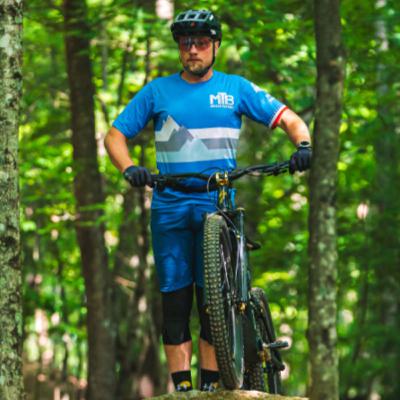
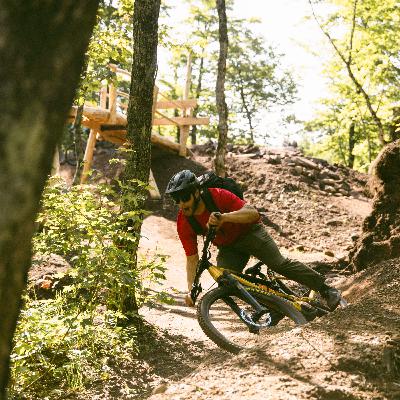




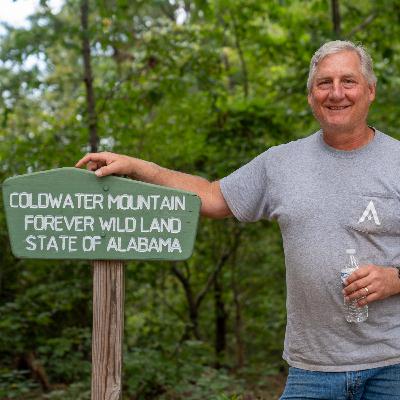
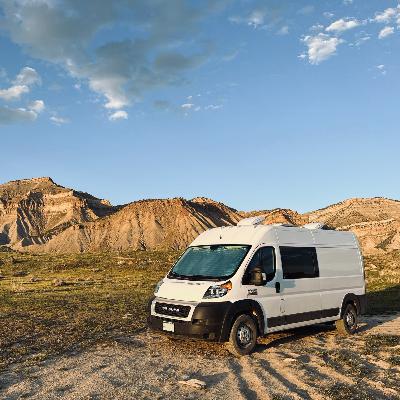
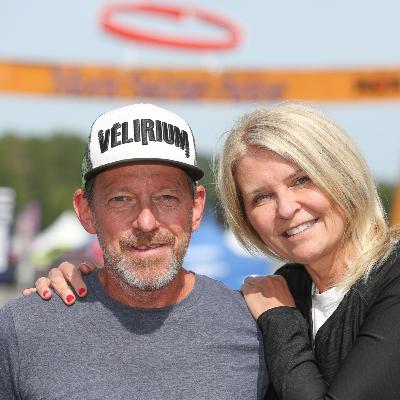
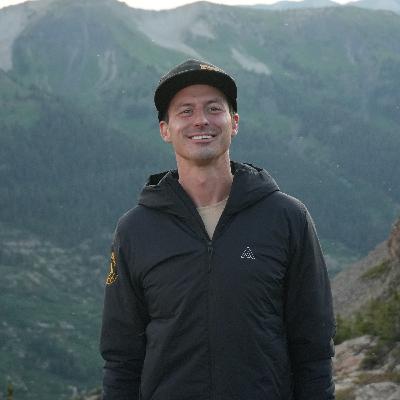
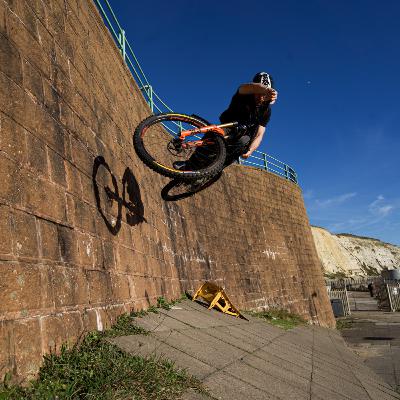
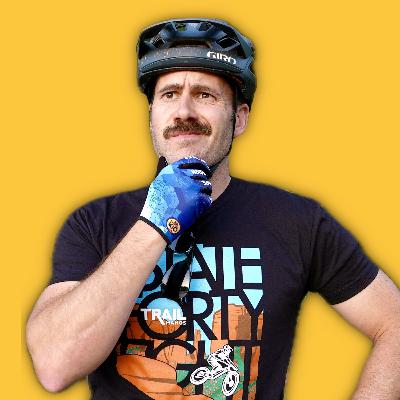
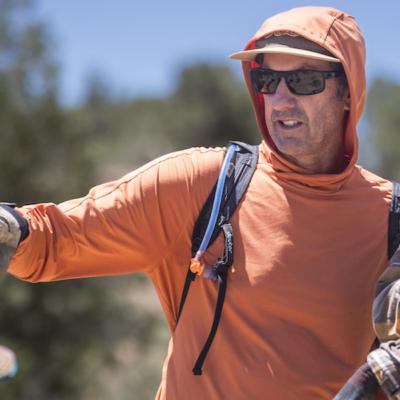
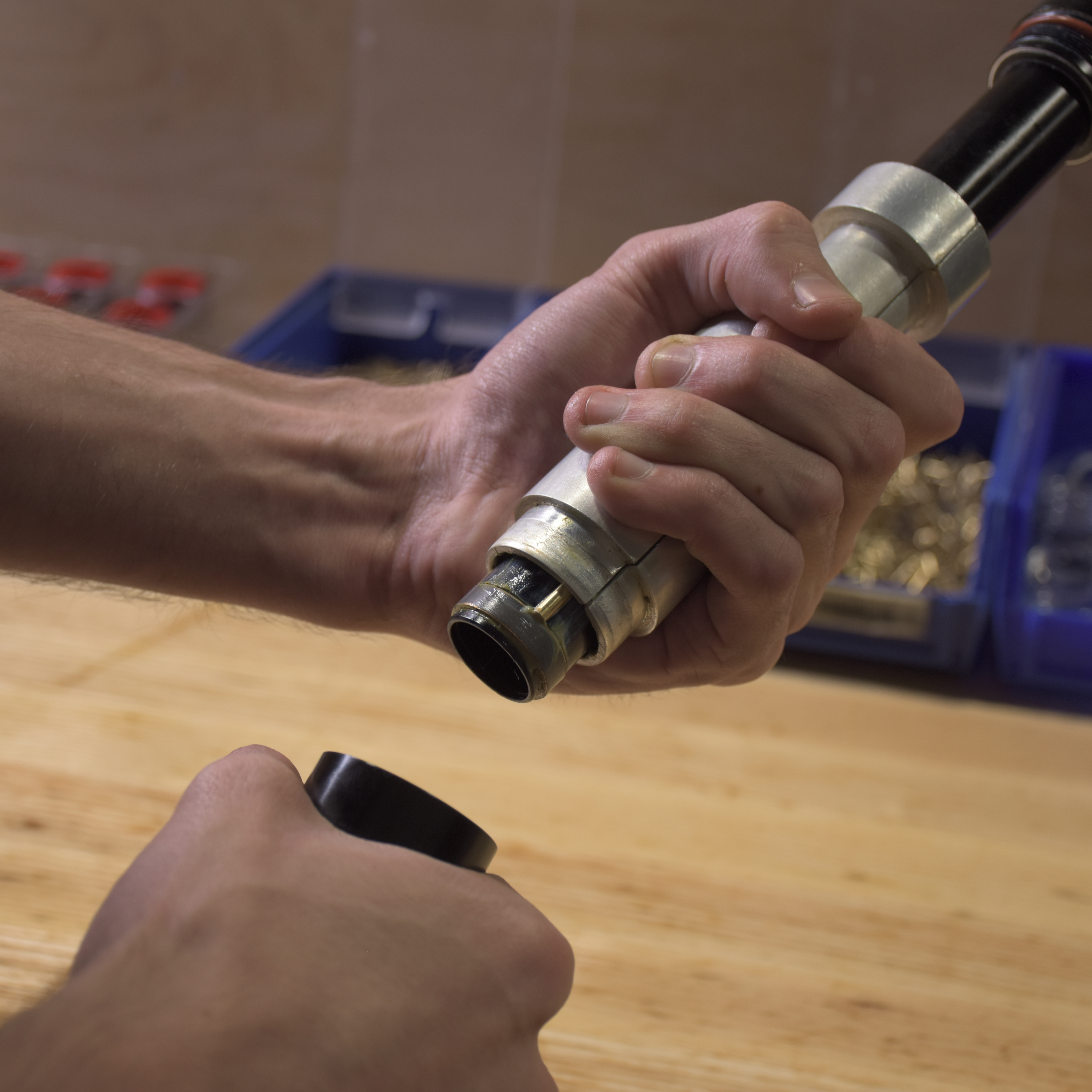
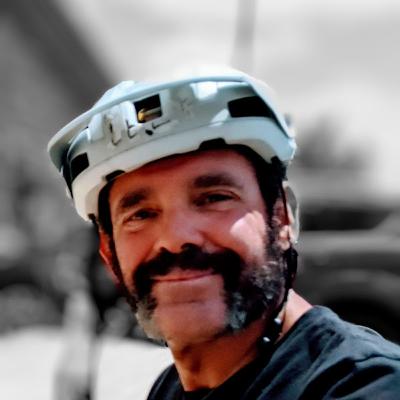

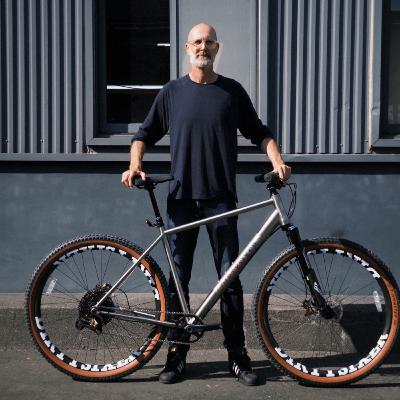
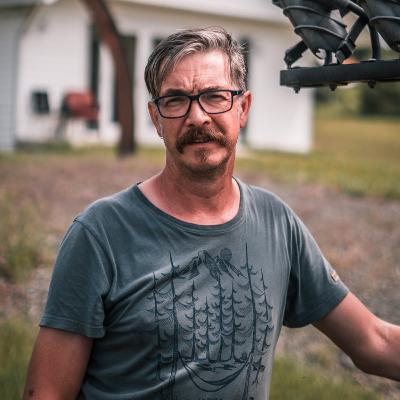



Downcountry shot was sweet👏👏👏 have a much better understanding of what its about and how the other geos/styles all fit in ✨✌️ George SLC UT
jeff, the sound quality of the podcast has degraded. u need a new mike or set up. thx for hours of mtb info!
thabks for making this podcast, it's really awesome to have on my commute. I'd like to rate it, but don't know how to rate podcasts in this app